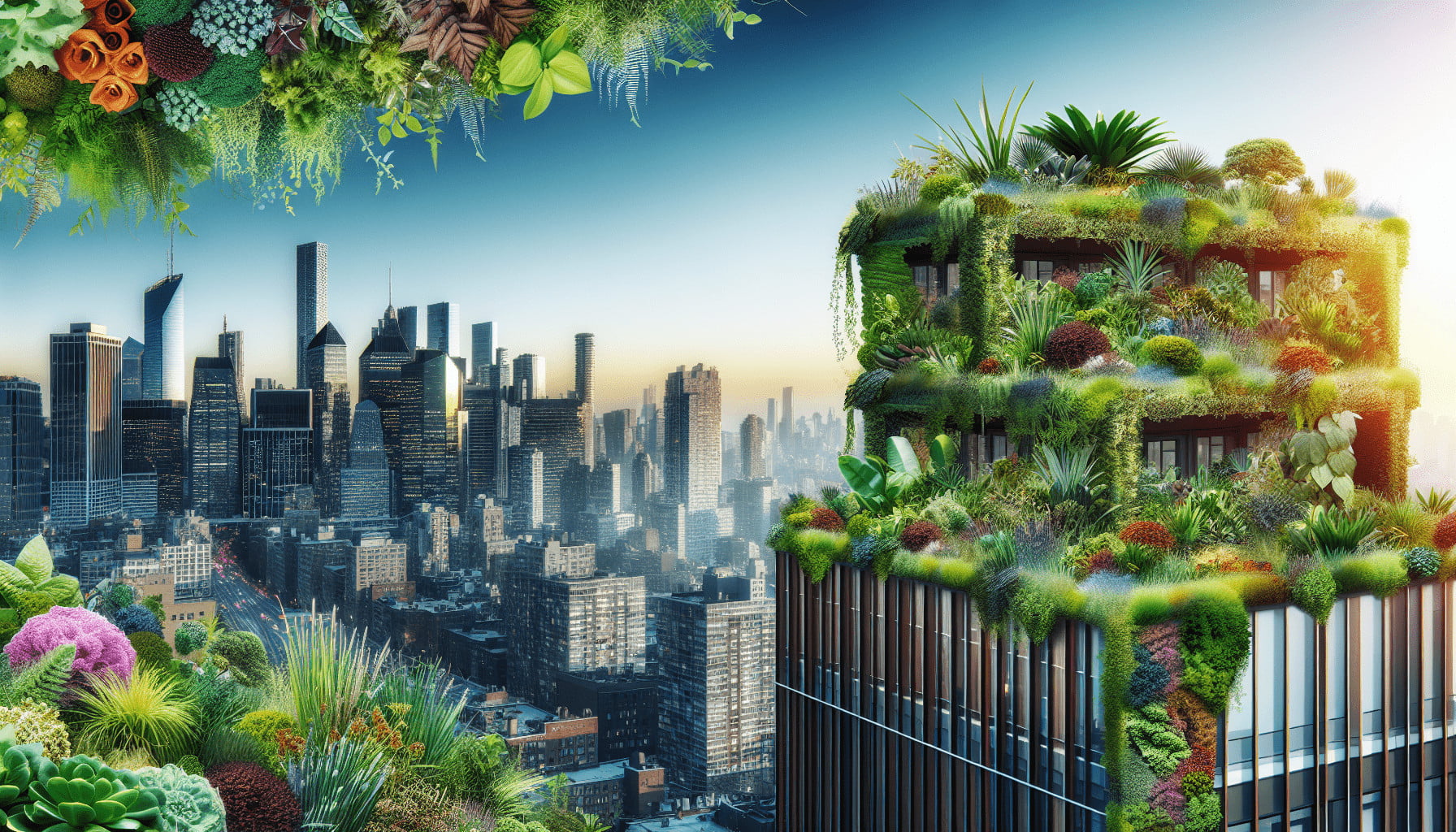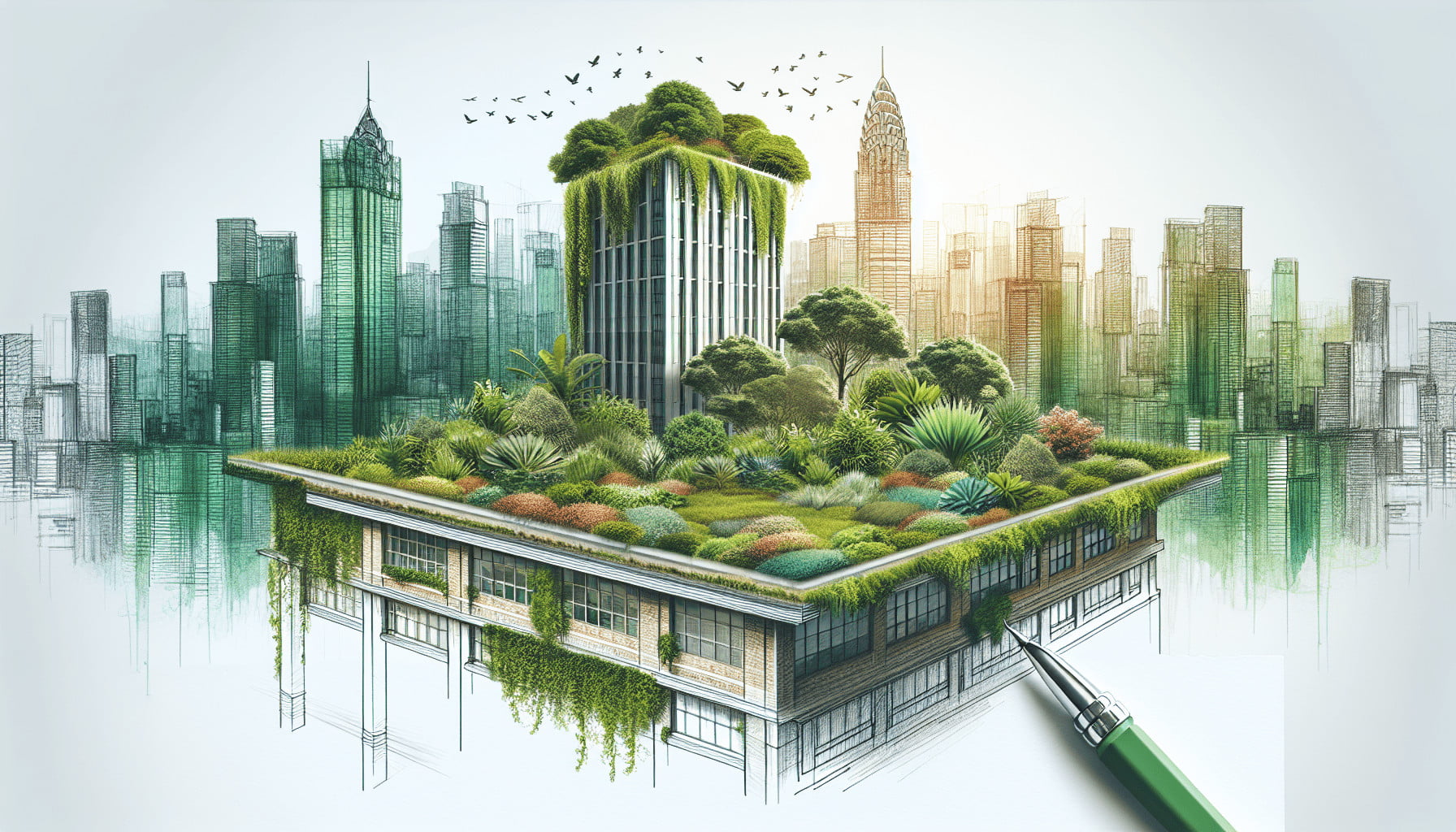In “Green Roof Systems: A Case Study of Successful Implementation,” you’ll explore the inspiring journey of integrating green roofs in urban landscapes. This article delves into the steps and strategies behind successful green roof projects, highlighting the environmental and economic benefits they bring to cities. You’ll also discover practical insights and real-world examples that illustrate how these eco-friendly rooftops can transform urban architecture. By the end, you’ll have a comprehensive understanding of how green roof systems are not merely a trend but a sustainable solution for modern cities.
Green Roof Systems: A Case Study of Successful Implementation
Have you ever wondered about the benefits of green roof systems and how they can transform our urban landscapes? Green roof systems are an intriguing solution for cities looking to improve environmental quality, manage stormwater, and create more sustainable building practices. In this friendly and comprehensive guide, you’ll discover how green roofs work, their benefits, and a detailed look at a case study of a successful implementation.
What is a Green Roof System?
Understanding Green Roofs
A green roof system, also known as a living roof, is a roof of a building that is partially or completely covered with vegetation and a growing medium, planted over a waterproofing membrane. It may also include additional layers such as a root barrier, drainage, and irrigation systems. Green roofs are designed to provide a range of environmental, social, and economic benefits.
Types of Green Roofs
To fully appreciate the versatility of green roofs, it’s important to understand the different types available:
| Type | Description |
|---|---|
| Extensive | Lightweight and low-maintenance, with shallow soil layers and drought-resistant plants. |
| Intensive | Heavier and requires more maintenance, with deeper soil layers supporting a variety of plants, including shrubs and small trees. |
| Semi-Intensive | Combines features of both extensive and intensive green roofs, allowing for more diverse plant selection with moderate maintenance. |
Benefits of Green Roof Systems
Environmental Benefits
Green roofs offer significant environmental advantages that contribute to more sustainable urban areas. Their ability to absorb rainwater reduces stormwater runoff, lessening the burden on municipal drainage systems. They also act as natural insulators, reducing the need for air conditioning and heating, thus lowering energy consumption and greenhouse gas emissions.
Economic Benefits
From an economic standpoint, green roofs can increase property value and extend the lifespan of a building’s roof by protecting it from UV rays and extreme temperature fluctuations. They also create opportunities for urban agriculture, providing fresh produce for local communities.
Social Benefits
Green roofs also have numerous social benefits. They can transform urban spaces into beautiful and functional areas, promoting mental well-being and providing recreational spaces for people to enjoy. Moreover, they help to mitigate the urban heat island effect, making cities more comfortable places to live.

Case Study: Successful Implementation of a Green Roof System
To illustrate the practical application and benefits of green roofs, let’s dive into a real-life example: the Chicago City Hall Green Roof Project.
Background of the Project
The Chicago City Hall Green Roof Project was initiated in 2000 as a demonstration project to test the effect of green roofs on urban heat islands and stormwater management. The project aimed to provide evidence-based results that could be used to promote green roof installation throughout the city.
Planning and Design
The planning and design phase of the project was crucial to its success. The design team aimed to create a robust green roof system that would thrive in Chicago’s climate. They selected a combination of native and drought-resistant plants, including grasses, herbaceous perennials, and sedum species.
Installation Process
The installation process began with the removal of the existing roof layers down to the structural deck. The team then installed a root barrier, followed by a drainage layer, filter fabric, growing medium, and finally, the plants. The project included the following steps:
- Roof Preparation: Removing old roofing materials and repairing the structural deck.
- Layer Installation: Applying waterproofing membranes, root barrier, drainage layer, and filter fabric.
- Growing Medium Addition: Adding a specially-formulated substrate to support plant growth.
- Planting: Installing pre-grown mats or plug planting that included a mix of native and resilient plant species.
Maintenance and Monitoring
Ongoing maintenance and monitoring were essential to ensure the green roof thrived. The maintenance plan included regular watering, especially during dry periods, fertilization, and weed control. The success of the green roof was closely monitored through the collection of data on temperature, humidity, and plant health.
Results and Benefits Observed
Environmental Impact
The green roof at Chicago City Hall showed a substantial reduction in the amount of stormwater runoff. By absorbing rainwater, the green roof helped to manage stormwater more effectively, reducing the strain on the city’s drainage system. Additionally, temperature sensors installed on the green roof indicated a significant decrease in surface temperature compared to traditional roofs, demonstrating its effectiveness in mitigating the urban heat island effect.
Economic Savings
From an economic perspective, the green roof achieved notable energy savings. The building’s energy consumption for cooling and heating was reduced, leading to lower utility bills. The extended lifespan of the roof also contributed to long-term cost savings by reducing the need for frequent repairs and replacements.
Social Benefits
Socially, the green roof transformed the Chicago City Hall into an urban oasis, enhancing the aesthetic appeal of the building. It provided a welcoming space for employees and visitors to relax and enjoy, contributing positively to their well-being. The project also raised public awareness about the benefits of green roofs, inspiring other buildings in Chicago to adopt similar initiatives.

Challenges and Solutions
Common Challenges
Implementing a green roof system poses several challenges, such as:
- Initial Investment Costs: Green roofs can be expensive to design and install, potentially deterring building owners.
- Structural Considerations: Not all buildings can support the additional weight of a green roof, requiring structural assessments and potential reinforcements.
- Maintenance Requirements: Green roofs require ongoing maintenance, which can be a concern for some property managers.
Solutions Implemented in the Case Study
| Challenge | Solution |
|---|---|
| High Initial Costs | Secured grants and funding from environmental and governmental programs to offset expenses. |
| Structural Limitations | Conducted thorough structural assessments and reinforced the building where necessary. |
| Maintenance Concerns | Developed a detailed maintenance plan and trained staff to manage the green roof effectively. |
Overcoming Obstacles
The successful implementation of the Chicago City Hall Green Roof Project demonstrates that these challenges can be managed with proper planning, financial support, and a commitment to maintenance. The city leveraged grants and partnerships to fund the project, conducted extensive structural assessments to ensure the building could support the green roof, and developed a comprehensive maintenance plan to keep the green roof in optimal condition.
Going Forward: Lessons Learned and Recommendations
Key Takeaways
This case study offers several valuable lessons for those considering the installation of a green roof system:
- Engage Experts: Collaboration with specialists in green roof design, structural engineering, and horticulture is vital for a successful project.
- Secure Funding: Explore various funding sources, such as grants, incentives, and partnerships, to make the project financially feasible.
- Plan Maintenance: Develop a detailed maintenance plan to ensure the ongoing health and functionality of the green roof.
- Monitor Performance: Regular monitoring and data collection are essential to assess the green roof’s performance and make necessary adjustments.
Recommendations for Future Projects
Future green roof projects can benefit from the following recommendations:
- Community Engagement: Involve the local community in the planning process to garner support and raise awareness about the benefits of green roofs.
- Customized Solutions: Tailor the design and plant selection to suit the specific climate, building structure, and intended use of the green roof.
- Scalable Approaches: Start with small pilot projects to demonstrate feasibility and gather data before scaling up to larger installations.
Conclusion
Green roof systems present a promising solution for enhancing urban sustainability, improving environmental quality, and creating more livable cities. The Chicago City Hall Green Roof Project showcases the potential benefits and challenges of implementing such systems. By learning from successful case studies and applying best practices, you can contribute to the growing movement towards greener, healthier urban environments.
Have you ever considered exploring the world of green roofs? Whether you’re a city planner, architect, building owner, or simply an environmentally conscious individual, the insights from this case study can guide your journey towards creating vibrant and sustainable urban spaces. Let’s embrace the power of green roofs and transform our cities, one building at a time!
